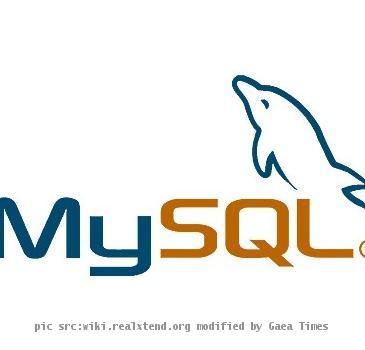How to CREATE a Case-Sensitive Table in MySQL?
By Avik, Gaea News NetworkWednesday, December 15, 2010
MySQL creates new columns for all elements in the SELECT.
For example:
mysql>CREATE TABLE test (a INT NOT NULL AUTO_INCREMENT,->PRIMARY KEY (a), KEY(b))->ENGINE=User_avik SELECT b,c FROM test2;
This creates a User_avik table with three columns, a, b, and c.
You can create one table from another by adding a SELECT statement at the end of the CREATE TABLE statement:
CREATE TABLEnew_tblSELECT * FROMorig_tbl;
Now, moving onto the main query,
CREATE [TEMPORARY] TABLE [IF NOT EXISTS] tbl_name
(create_definition,…)
[table_options]Or:
CREATE [TEMPORARY] TABLE [IF NOT EXISTS] tbl_name
[(create_definition,...)]
[table_options]
select_statementOr:
CREATE [TEMPORARY] TABLE [IF NOT EXISTS] tbl_name
{ LIKE old_tbl_name | (LIKE old_tbl_name) }create_definition:
col_name column_definition
| [CONSTRAINT [symbol]] PRIMARY KEY [index_type] (index_col_name,…)
[index_type]
| {INDEX|KEY} [index_name] [index_type] (index_col_name,…)
[index_type]
| [CONSTRAINT [symbol]] UNIQUE [INDEX|KEY]
[index_name] [index_type] (index_col_name,…)
[index_type]
| {FULLTEXT|SPATIAL} [INDEX|KEY] [index_name] (index_col_name,…)
[index_type]
| [CONSTRAINT [symbol]] FOREIGN KEY
[index_name] (index_col_name,…) reference_definition
| CHECK (expr)column_definition:
data_type [NOT NULL | NULL] [DEFAULT default_value]
[AUTO_INCREMENT] [UNIQUE [KEY] | [PRIMARY] KEY]
[COMMENT 'string'] [reference_definition]data_type:
BIT[(length)]
| TINYINT[(length)] [UNSIGNED] [ZEROFILL]
| SMALLINT[(length)] [UNSIGNED] [ZEROFILL]
| MEDIUMINT[(length)] [UNSIGNED] [ZEROFILL]
| INT[(length)] [UNSIGNED] [ZEROFILL]
| INTEGER[(length)] [UNSIGNED] [ZEROFILL]
| BIGINT[(length)] [UNSIGNED] [ZEROFILL]
| REAL[(length,decimals)] [UNSIGNED] [ZEROFILL]
| DOUBLE[(length,decimals)] [UNSIGNED] [ZEROFILL]
| FLOAT[(length,decimals)] [UNSIGNED] [ZEROFILL]
| DECIMAL[(length[,decimals])] [UNSIGNED] [ZEROFILL]
| NUMERIC[(length[,decimals])] [UNSIGNED] [ZEROFILL]
| DATE
| TIME
| TIMESTAMP
| DATETIME
| YEAR
| CHAR[(length)]
[CHARACTER SET charset_name] [COLLATE collation_name]
| VARCHAR(length)
[CHARACTER SET charset_name] [COLLATE collation_name]
| BINARY[(length)]
| VARBINARY(length)
| TINYBLOB
| BLOB
| MEDIUMBLOB
| LONGBLOB
| TINYTEXT [BINARY]
[CHARACTER SET charset_name] [COLLATE collation_name]
| TEXT [BINARY]
[CHARACTER SET charset_name] [COLLATE collation_name]
| MEDIUMTEXT [BINARY]
[CHARACTER SET charset_name] [COLLATE collation_name]
| LONGTEXT [BINARY]
[CHARACTER SET charset_name] [COLLATE collation_name]
| ENUM(value1,value2,value3,…)
[CHARACTER SET charset_name] [COLLATE collation_name]
| SET(value1,value2,value3,…)
[CHARACTER SET charset_name] [COLLATE collation_name]
| spatial_typeindex_col_name:
col_name [(length)] [ASC | DESC]index_type:
USING {BTREE | HASH}reference_definition:
REFERENCES tbl_name (index_col_name,…)
[MATCH FULL | MATCH PARTIAL | MATCH SIMPLE]
[ON DELETE reference_option]
[ON UPDATE reference_option]reference_option:
RESTRICT | CASCADE | SET NULL | NO ACTIONtable_options:
table_option [[,] table_option] …table_option:
{ENGINE|TYPE} [=] engine_name
| AUTO_INCREMENT [=] value
| AVG_ROW_LENGTH [=] value
| [DEFAULT] CHARACTER SET [=] charset_name
| CHECKSUM [=] {0 | 1}
| [DEFAULT] COLLATE [=] collation_name
| COMMENT [=] ’string’
| CONNECTION [=] ‘connect_string’
| DATA DIRECTORY [=] ‘absolute path to directory’
| DELAY_KEY_WRITE [=] {0 | 1}
| INDEX DIRECTORY [=] ‘absolute path to directory’
| INSERT_METHOD [=] { NO | FIRST | LAST }
| MAX_ROWS [=] value
| MIN_ROWS [=] value
| PACK_KEYS [=] {0 | 1 | DEFAULT}
| PASSWORD [=] ’string’
| ROW_FORMAT [=] {DEFAULT|DYNAMIC|FIXED|COMPRESSED|REDUNDANT|COMPACT}
| UNION [=] (tbl_name[,tbl_name]…)select_statement:
[IGNORE | REPLACE] [AS] SELECT … (Some legal select statement)
It must be noted that CREATE TABLE creates a table with the given name. You must have the CREATE privilege for the table. You should check out with the permissible table names in order to avoid unneccessary errors. By default, the table is created in the default database. An error occurs if the table exists, if there is no default database, or if the database does not exist.
The table name can be specified as db_name.tbl_name to create the table in a specific database. This works regardless of whether there is a default database, assuming that the database exists. If you use quoted identifiers, quote the database and table names separately. For example, write `mydb`.`mytbl`, not `mydb.mytbl`.
Tags: Case-Sensitive, MySQL
